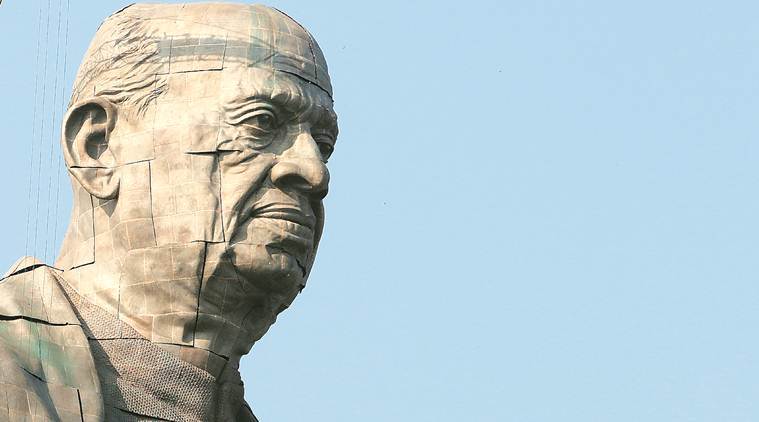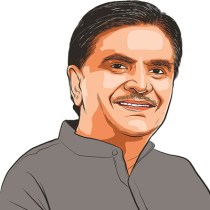Celebrating the unifier
Without Sardar Patel, India would have been a fragmented entity.

The monumental contribution of Patel can never be evaluated without going through the critical phase of Indian political history between 1947-50. Also, no assessment of the role played by the Sardar is possible without undertaking a tour of the places he visited and impacted. (Express photo by Bhupendra Rana)
A human lifespan is too short compared with the life of a nation. However, the legacy of visionaries — Abraham Lincoln who led America into a new era or Nelson Mandela in South Africa or the stalwart of Indian nationhood, Sardar Vallabhbhai Patel — will guide nations for ages.
In public life, there is inevitably an urge to take credit — it comes naturally to politicians all over the world. It is an unfortunate tendency. Regimes that hold power are known to scuttle endeavours to raise memorials and commemorate visionaries. They do so in order to claim all credit for the long-drawn process of nation building. That is why, in India, the legacy of many a great visionary has been ignored. Sardar Patel is one such leader, whose contribution has been sidelined by the powers-that-be for decades.
However, now the world’s tallest of statue will celebrate the contributions of the Sardar. Inaugurated on Wednesday at Sadhu Bet, Sardar Sarovar Dam in district Narmada, 90 km from Vadodara, the Statue of Unity, the giant memorial statue was commissioned by the then Chief Minister of Gujarat, Narendra Modi. It is fitting that Narendra Modi inaugurated the statue as prime minister.
It is pertinent to highlight the message the government wants to send out by inaugurating this statue. Would the Union of India be a reality without the contribution of Patel? In fact, without his contribution, India would be a fragmented cluster of tiny princely states, autonomous unto themselves, something that the British would have wanted to happen. These scattered states or city states would be riven with animosity and torn apart by conflicts. Imagine, how many enemies would we be fighting? Would we be seeking visas for visiting Gujarat or Telangana or the states in the Northeast just as we seek visas for visiting places of pilgrimage in Pakistan, China and Bangladesh ?
The monumental contribution of Patel can never be evaluated without going through the critical phase of Indian political history between 1947-50. Also, no assessment of the role played by the Sardar is possible without undertaking a tour of the places he visited and impacted.
Many thinkers and philosophers have termed India as a cultural entity. India is indeed one of the world’s oldest civilisations, whose nationality is based upon its culture and does not derive from isolated federal units or states. Would India have found its calling as a nation with 565 fragmented and dissociated units? This nation would have failed to find its identity as a nation state had Patel not been there. To establish themselves as a strong nation, cultural entities require a robust governing structure.
The Statue of Unity is both a story about the making of present day India and a homage to the architect of that nationhood, who united the country during and after Independence. It will open up vital pages of history to newer generations. As the highest statue in the world, it will make history of sorts.
Patel’s great work for the integration and unification of India will be celebrated by this statue. Made from the iron used and contributed by farmers from each village in India, and from earth brought from every Indian village, the grand monument will stand tallest in the world even as it would be imprinted in the consciousness of every Indian.
But if we delve into the personality of Patel, we will realise that his life was far more expansive than this memorial to him. This national pilgrimage centre would introduce, to the present generation, the valour of this nation even as it will unravel the untold aspects of its history and inform people about the sacrifices of its real heroes. This is somewhat on the lines of the Yad Vashem museum of Israel that is devoted to the victims of holocaust.
The memory of Sardar Patel will no longer be dwarfed.
The writer is National Coordinator, ‘Statue of Unity’ Iron Collection Corporation Committee, and Minister of Agriculture & Panchayat, Haryana.







































No hay comentarios:
Publicar un comentario